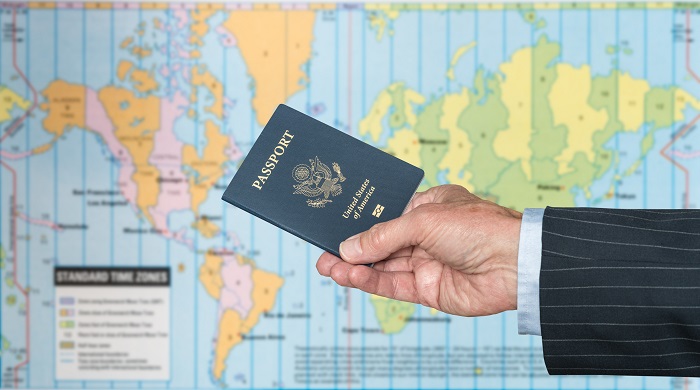Procedure of Immigration to the US can seem simple just like filling up some forms, but it is not like that at all. You can try filling an immigration form on your own or with a notary or form filling agency, but because of the wrong information filled or the wrong box checked, it can cost you your life or your future in the US.
If you do not correctly and accurately complete the form that could be the reason to be denied or worse that could be the reason why you end up in deportation proceedings.
Immigration is fact-intensive and involves a thorough analysis of your personal, criminal, immigration history that clients may oversee while filling their immigration law. From a financial perspective, it may seem that it is easier, and cheaper to go with an agency that fills out forms in front of a notary or high volume attorney that is not experienced in immigration laws that are cheaper and offer a free consultation to charge a few hundred dollars to help you fill out your form.
However, this can be very dangerous. It is important to remember that these agencies are not attorneys and therefore they can’t represent you or give you legal advice because it is actually against the law.
Notaries or form filler agencies do not get copies of notices that USCIS or the National Visa Center, immigration court, or various other government institutions send, whereas attorneys do.

They do not take legal responsibility for the work they have done. They may put some incorrect information in your application form and all of the small mistakes and other misinformation, which will become your mistakes in the process. If the officers make some mistake applying the law or they are trying to mislead you, they will not be there for you, or even if any inappropriate question is being asked you don’t have an advocate with you, to ask for supervisory review of your case because the USCIS officer has overstepped their boundaries of the law. Simply put, you are on your own.
What is The Easiest Way for immigration to the US?
As a foreign citizen who is seeking for immigration to the US, you may requires an immigrant visa which is sometimes called getting a green card. We suggest some of the easy and legal ways for immigration to the US and its requirements:
Marriage
To be eligible for getting a green card this way, a foreign citizen must be sponsored by an immediate relative who is at least 21 years old and is either a U.S. citizen or U.S. lawful permanent resident. Marriage is a common way this is done, but the marriage must be genuine and not simply undertaken for immigration purposes.
There are two types of family-based immigrant visas:
- Immediate Relatives – these visas are based on a close family relationship with a U.S. citizen, such as a spouse, child or parent. The number of immigrants in these categories is not limited each fiscal year. Processing is done expeditiously—usually taking say around a year or so.
- Family Preference – these visas are for specific, more distant, family relationships with a U.S. citizen and certain specified relationships with a lawful permanent resident. The number of immigrants in these categories is limited each fiscal year. Processing takes longer, usually for years—sometimes decades.
Investment
The EB-5 direct investor program currently lets the investor immigrants to get green cards by investing as little as $500,000 in their businesses, provided they create ten new jobs.
This opportunity is temporary and is likely to close soon with the amount required likely to go up to $900,000 as it was before. A regional center variation of this program is currently closed and awaiting reopening by the US Congress.
Study
One of the common ways for immigration to the US is to get a student visa to study in a US college to get a bachelor’s or master’s degree. That will entitle you to a one-year post-graduate work permit called Optional Practical Training.
Following the one year, get your employer’s to apply for an H1B work visa for you. Then, get the employer to apply for labor certification from the Department of Labor evidencing that there are no American workers who are ready, willing and able to take the job.
Then apply for a green card through the DHS Citizenship and Immigration Service. This is a long and winding road, full of agony, but it may be the only option for many applicants, especially those who have skills but little money to invest and no family in the USA.
Work
Either apply for a H1B work visa and then get a green card through labor certification as described above, or apply for an EB-2 extraordinary worker green card based on a national interest waiver.
H-1B applicants who perform services in a specialty occupation, services of exceptional merit and ability relating to a Department of Defense cooperative research and development project, or services as a fashion model of distinguished merit or ability can then obtain green cards if their employer will apply for labor certification and then sponsor them for a green card.
Again, this is an arduous route starting with a lottery in most H1B cases, and limited in numbers per year. If the job is related to a college, nonprofit affiliated with a college, a nonprofit or U.S. governmental research organization, or an organization that requires the H-1B employee to work at one of these first three categories of employers, however, there is no limit in terms of numbers. That said, an H1B visa route is the least desirable way to get a green card because it is so complicated.
The beauty of an EB-2 application is you can self-petition for a green card and you are not reliant on a job offer.
Plus providing evidence of an advanced degree or exceptional ability, you have to meet the national interest waiver criteria, namely that the proposed endeavor has both substantial merit and national importance, you are well positioned to advance the proposed endeavor, and it would be beneficial to the United States to waive the normal requirements of a job offer, that being said, a labor certification. It is also necessary to note that certain nurses and physiotherapists can take this route to a green card without labor certification if offered a job in those professions.
Where Do Most Immigrants to the US Come From?
According to the United Nations, the US has the highest immigrant population in the world at 50.6 million (as of mid-2020), which equates to approximately 15.3% of the total U.S. population and 18% of international immigrants worldwide.
According to
- Mexico — 100,325
- India — 46,363
- China — 41,483
- Dominican Republic — 30,005
- Vietnam — 29,995
- Philippines — 25,491
- El Salvador — 17,907
- Brazil — 16,746
- Cuba — 16,367
- South Korea — 16,244
In 2020, the United States granted 707,362 people lawful permanent resident status, a significant drop from the usual average of more than a million. The states with the largest immigrant populations are California, New York, Florida, and Texas.
Different Types of Visa for Immigration to the US
An experienced attorney can help you with the application process for the Student Visa at the US embassy or to change your status to F1 if you are in the US, as well one can prepare you for the visa interview at the embassy and advise you on your other immigration options.

The Immigration and Nationality Act gives two nonimmigrant visa types for persons wishing to study in the US. The “F” visa is reserved for non-immigrants wishing to pursue academic studies and/or language training programs, and the “M” visa is for those wishing to pursue nonacademic or vocational studies. For a family visa type, there is the commonly known term “Green Card” requiring sponsorship by a parent, son or daughter, or spouse. The process begins with the filing of a family petition with CIS, typically followed by an adjustment of status application. However, if the sponsored family member is abroad, consular processing may be required.
After holding Lawful Permanent Residence for the required number of years, a good law firm can assist you in obtaining U.S Citizenship. According to Mahsa Khanbabai an experienced business immigration attorney, basic information about the most common visa types (student and family – visit services on her website).
It is Crucial to Follow the Law and to be Updated With All the Changes in the Area for immigration to the US.
US Office of Immigration Statistics
The Office of Immigration Statistics (OIS) is an agency of the United States Department of Homeland Security under the Office of Strategy, Policy, and Plans.
According to the passage of the Homeland Security Act of 2002, the Department of Homeland Security’s Office of Immigration Statistics has responsibility to carry out two statutory requirements:
1) to collect and disseminate to Congress and the public data and information useful in evaluating the social, economic, environmental, and demographic impact of immigration laws;
and
2) to establish standards of reliability and validity for immigration statistics collected by the department’s operational Components.
COVID-19 and Immigration to the US
Nowadays, there are a lot of changes regarding not only for immigration to the US, but for immigration apparatus generally, altering daily operations and disrupting the lives of all the applicants. In a very short period in the US, there have been changes from postponing immigration hearings to pausing deportation flights to certain countries and suspending refugee admissions CNN states.
Most of the changes were urged because of the coronavirus outbreak. Firstly, the US and Mexico announced that they’re limiting the nonessential travel across the border to cut movement during the pandemic.

The Department of Homeland Security will take serious measures to the people traveling across the border without proper travel documentation. But, that is not all, the US and Canada suspended most of the cross-border travel between the two countries. The Immigrations and Customs Enforcement announced that changes will be made in immigration enforcement operations related to medical care. The Justice Department from the other side closed an additional 10 immigration courts across the country and postponed all the hearings of cases of immigrants that are not in detention. The US paused refugee admissions as well, respecting the International Organization for Migration argument, that it could increase the exposure of refugees to the virus.
Other measures were taken as well. ICE suspended some deportation flights to Italy, China and South Korea. USCIS suspended in-person services, including all interviews and naturalization ceremonies to stop spreading the coronavirus. ICE reschedules in-person appointments of immigrants who are not in detention and announced a temporary end to a social visitation at detention facilities.
Other countries made necessary restrictions so the spreading of coronavirus will be voided. On that purpose Guatemala suspended asylum agreements with the US and the US extended the travel restrictions to the UK and Ireland, implementing travel restrictions to the whole of Europe as well.
Migrant children were not left out of these changes, the Office of Refugee Resettlement, temporarily stopped placing kids that arrive in the US in shelters in California and Washington state, unless in limited circumstances. The children, according to the announcement, are turned over to HHS after being taken into custody by the Department of Homeland Security.
Because of all of the changes referring to immigration proceedings mentioned above, a coalition of immigration groups is suing the Trump administration in a bid to shut down immigration courts until the coronavirus crisis comes to an end – The hill press reported. The plaintiffs claim that the Department of Justice Executive Officer for Immigration Review’s decision not to suspend immigration hearings puts everyone involved in proceedings at risk for infecting with COVID-19. The real danger is not only for the immigrants, but also to attorneys, judges, and other government personnel.
As “LegalReader” reported last week, ICE has been sued across at least a half-dozen states for its failure to mitigate coronavirus in its facilities. Other activist groups, including the American Civil Liberties Union, have demanded the agency release elderly or otherwise vulnerable migrants for the foreseeable future – because COVID-19, while extremely contagious, tends to present significantly more serious symptoms in older adults as well as those with pre-existing health conditions, like diabetes or asthma. Federal courts across the country and the Supreme Court have closed down, but immigration courts have continued to operate with significantly less disruption. Policies enacted to suspend in-person hearings apply only to migrants who are not currently detained.
It is really hard to take legal actions in such an extraordinarily tough time, respecting all the rights that immigrants have, and at the same time making a safe environment where spreading coronavirus will be avoided.




